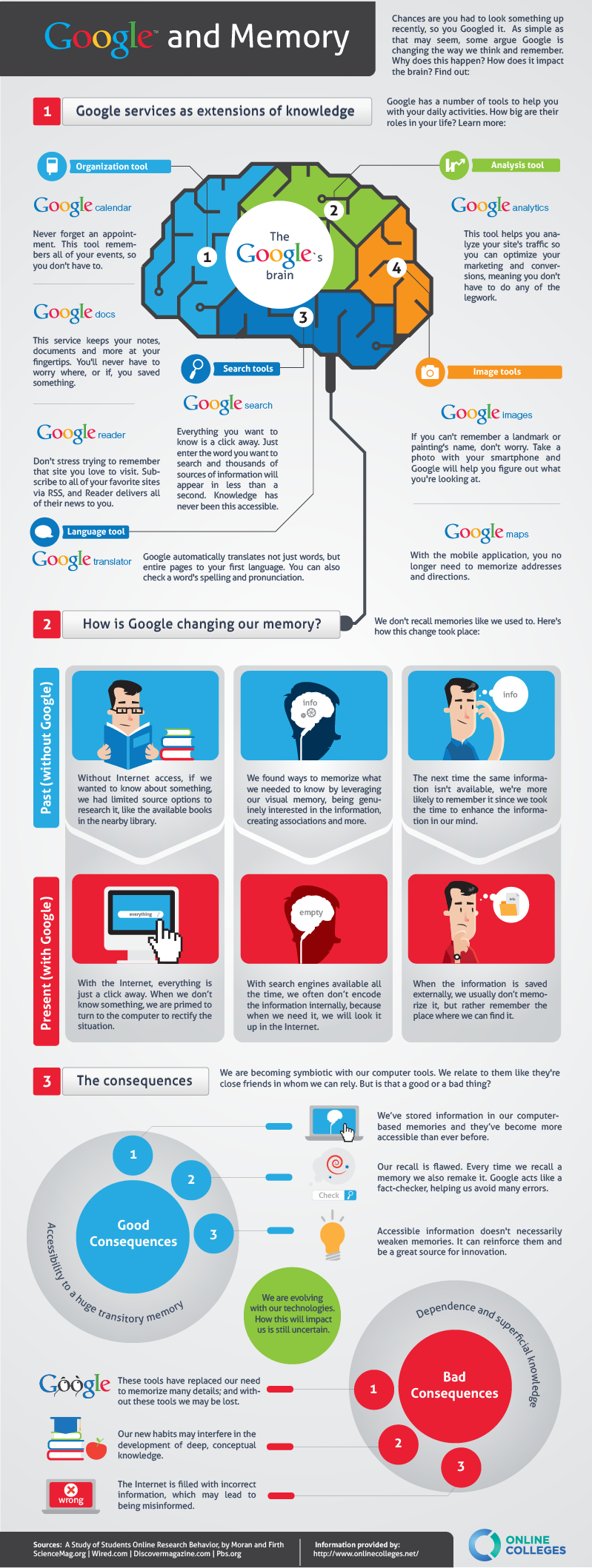I don't think students need to memorize everything. I distinctly recall numerous teachers telling me not to worry about memorizing dates and facts. It was much more important to them that I understood the basic ideas rather than exact facts. "If you ever need need to know how high Mount Everest is, or how many wives King Henry the VIII had" they explained, "you can look it up in an encyclopedia."
In this day of smart phones most of the time we don't even need to find an encyclopedia. We turn to Google or Wikipedia and find the information we need, and usually I am OK with this.Many students take this one step further. They don't even feel the need to take notes. Instead they use their smart phones to take a picture of the board. While I do encourage the use of Google or Wikipedia to help a student understand a basic grasp of something, is technology affecting their memories? A recent study done by Fairfield University shows that when students take a picture of somethingthey are LESS LIKELY to remember it later. This "photo taking impairment effect" is something I discuss with my students the first day.
If they take a picture, and then go home and re-write the notes they will likely remember the information. However, simply by taking the picture they are, in part, telling their brain the information is stored elsewhere and they do not need to remember it.
What about Google? Is Google affecting the way they remember? It turns out there are good parts and bad parts to the ease of accessing information online. Since our memories are fallible it is a way to double check things and be sure that we are using the correct data.
On the other hand, when students are taught to properly weed through information on the internet it is very probable that they will find false information and reinforce that. Also, the lack of a basic set of knowledge makes comprehension of the topic (and thus deeper level thinking) much harder to achieve. The infographic below is from www.onlinecolleges.net and does a pretty good job at showing some of the affects.
Please include attribution to OnlineColleges.net with this graphic.
